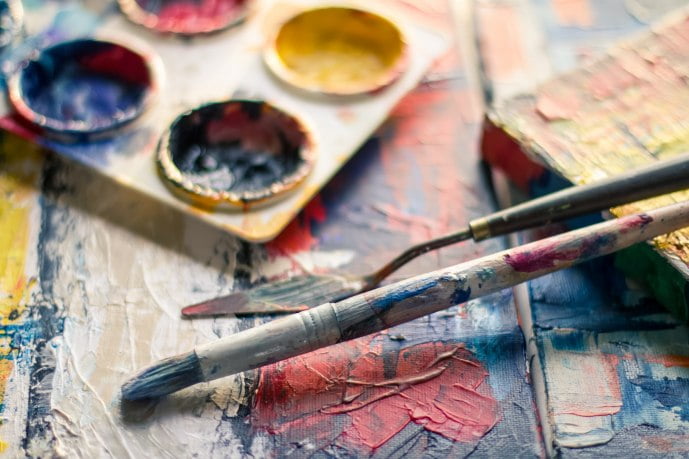Introduction:
What You Need to Know About Painting
Paint is a material that can be applied to surfaces of many different materials, including paper, wood, stone, metal and plastic. Paint can be used to create a wide range of colors and textures.
Painting is the process of applying paint to a surface in order to produce an image or design on it. The most common types are watercolor paint and oil paint, but there are many others.
Common Painting Methods and Techniques
Acrylic paint is a versatile, affordable medium that can be used for mixed media, painting, sculpting and more. It dries quickly and is water soluble, making it perfect for outdoor art projects. Acrylics are produced by combining an acrylic polymer emulsion with pigment.
How to Choose the Paint for Your Project
When you’re a painter, there are a lot of supplies you need to buy. Buying paint is one thing, but there are also things like brushes, rollers, and paint thinner that you’ll need. You might even want to purchase a catalog for your next painting project.
Getting Started With Paint – Supplies and Tools
Choosing the right paint for your project can be a difficult task. There are many factors to consider such as how it will be applied, what quality you’re looking for, and the desired finish. The good news is that we’ve compiled a list of paint types and tips on how to use them to make the process easier.
Paint a Scene with a Live Instructor
A blog post about the most popular painting exercises and how they work.
This post will offer some free lessons on how to paint with some simple exercises.
How to Frame & Hang your Painting
Gallery wrap canvas frames are considered to be the best type of frame you can choose for your artwork. They provide a clean and elegant look, and can be found in a variety of colors to perfectly match your décor.
5 Tips to Start Painting Like a Pro

Introduction:
what is painting and how do I know if I am a good painter?
Painting can be a daunting task for beginners. This article will walk you through the steps to create your first painting and teach you some helpful tips that will help you become a better painter.
Tip 1: find the balance between structure and creativity
Learning to paint is tricky and takes a lot of time and patience in the beginning. The good news is that you don’t need to spend hours in a class or buy expensive art supplies. These online tutorials guide you through the process step by step and will have you painting like a pro in no time!
Tip 2: make sure your colors match the mood of your piece
In order to create a cohesive and compelling piece, the colors of your text should match the mood you are trying to evoke.
The colors you choose will depend on your topic. For example, a sad story will be written in a dark color palette while a happy story might be written in brighter colors. You can use this technique to guide your readers through the different parts of your work and help them better understand what you’re trying to say.
Tip 3a. use different types of brush strokes to create texture and mood
Brushes are the most important part of a painting. It is the tool that makes the painting come alive and it is what gives it texture and mood.
There are many different types of brushes and they all serve a specific purpose. For example, there are brushes that make your painting look like it has been created with chalk or watercolor or oil paint.
Tip 4. use layers of colors and shades that blend into one another
Achieving a harmonious color palette is not an easy task. It requires a lot of patience and precision to make sure that the colors blend in with one another and don’t clash. The key to achieving this is layering different colors and shades of the same hue to create a cohesive look.
Tip 5. saving money on home painting with these tips
The first step in this process is choosing your base color. From there, you can start layering other colors on top of it by adding darker shades or lighter ones that have been mixed together. This will ensure that your design has a sense of depth and vibrancy, while still being aesthetically pleasing to the eye.
You can save up to 50% on paint by choosing the right type of paint for your project. You can find this information in the paint label or by asking a professional at your local hardware store.
You can save up to 10% on supplies by using coupons and rebates. You can also buy supplies in bulk which will give you a discount off of each individual item plus savings on shipping costs.
Finally, you can save up to 15% on labor by doing some of the work yourself or hiring professionals who charge less than other contractors in your area.

